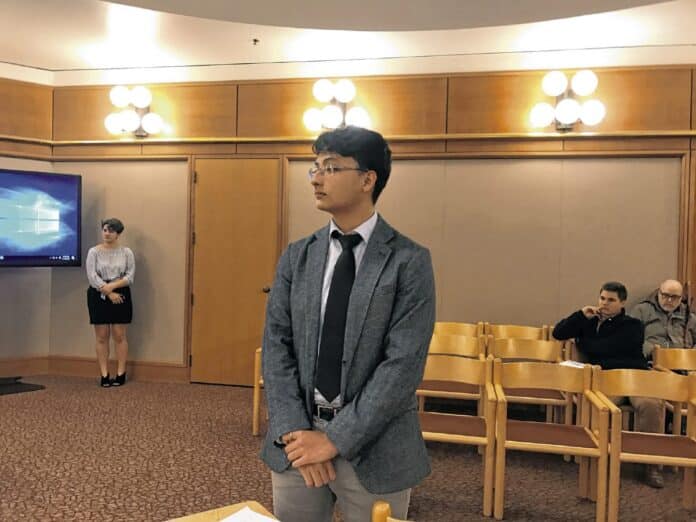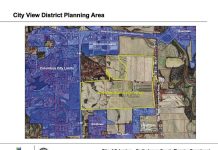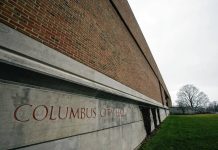
Three years after a pedestrian crossing was placed in front of Columbus East High School as the result of a student’s senior project, a Columbus North High School senior is also using his senior project to improve pedestrian safety.
Ricky Ehara, 18, appeared before the Columbus Board of Public Works and Safety to request an engineering study for the intersection of 27th Street and Home Avenue.
There are four schools near the intersection, including North, Northside Middle School, Lillian Schmitt Elementary School and St. Bartholomew Catholic School that have about 4,000 students in that vicinity before and after classes.
In his Nov. 19 presentation, the son of Tsutomu and Jennifer Ehara provided his own research that showed 702 vehicles went through the intersection of 27th and Home between 7 and 8 a.m. on a typical school day.
[sc:text-divider text-divider-title=”Story continues below gallery” ]
“At the peak, over 300 vehicles passed through in the span of 20 minutes,” Ehara said. While the senior had no afternoon traffic counts, he said it appears to be as congested between 3 and 4 p.m. as the morning traffic is, he said.
Results of a poll Ehara had taken of 143 students and faculty indicate that 86% of respondents feel the city should take some action to alleviate traffic and increase safety at the intersection.
The North senior also interviewed crossing guards who said it often becomes unclear which drivers should go through the intersection next. The guards also said they have occasionally come close to being struck by a vehicle, Ehara said.
With his research, Ehara went to Columbus City Hall and met with assistant city engineer Andrew Beckort, who strongly suggested that the senior read the “Manual on Uniform Traffic Control Devices,” a federal publication specifying standards by which traffic signs, road surface markings and signals are designed, installed and used.
Prior to reading the manual, Ehara said he was ready to recommend a traffic signal. But after going through the publication, he told the board that he quickly found out, “I’m not qualified to make any judgements.”
Cost estimates
Mary Ferdon, who chaired the board meeting and serves as the city’s executive director of administration and community development, was impressed with the student’s research that also include rough cost estimates.
While engineering studies will cost between $5,000 to $10,000, the design would about $25,000, and signal construction and installation will be from $200,000 to $250,000, according to Ehara’s report.
Although Ferdon, a former teacher, lauded Ehara for the first-hand research he had undertaken, she and other city officials also outlined some tough realities.
“While there are times when you can make a change, there are other times when there are reasons why we can’t easily change it,” Ferdon told Ehara.
Since heavy congestion only lasts for about a half-hour both before and after classes, it would be difficult to justify spending hundreds of thousands of dollars, Ferdon said.
An engineering study would also not provide any details regarding driver and pedestrian behavior, which Ferdon said is very important in improving safety.
Several past discussions involving police administrators and the city engineer’s office have been held examining the problems at 27th and Home, said Columbus executive director of public works and city engineer Dave Hayward.
The city has sponsored at least two meetings with representatives of all four neighboring schools in an effort to try to find some solutions, Hayward said.
But what city officials concluded is that any effort to alleviate traffic concerns for one school could have an adverse impact on the other three schools, he said.
And while traffic guards have talked about “near-misses” at 27th and Home, Hayward said he’s unaware of any recent accident at that intersection where someone has been seriously injured.
Local efforts
One step taken to alleviate traffic was the 2017 extension of Maple Street onto National Road. However, records show it took five years from approval before the street extension became a reality.
The city engineer also brought up the efforts of Taylor Chitty, a Columbus East student who was severely injured in 2011 after being struck by a vehicle while crossing South Marr Road.
The following year, Chitty made the installation of a pedestrian crosswalk across Marr Road with flashing strobe lights her senior project.
While a crosswalk was planned in front of East even before the student’s accident, Hayward said it still took an exceptionally long period of time before federal funds were provided for the project.
“We had already approved it before (Chitty) began her senior project,” Hayward said. “Nevertheless, it was three years after she graduated by the time the signal was finally installed.”
Hayward assured Ehara he will check again to see if anything else can be done to alleviate the congestion.
This isn’t the only vicinity with this type of congestion problem. An almost identical situation can be found just east of downtown Columbus, where St. Peter’s Lutheran, Lincoln CSA and Central Middle schools are all located in the same general area, Hayward said.
“We’re in the process right now of examining what can be done there, because they have some overlapping traffic that’s not working very well,” Hayward said.
At the end of the presentation, Ferdon asked the high school senior what his next step will be if the city takes no further steps to improve safety at 27th and Home.
Pausing a moment to contemplate his answer, Ehara replied that “perhaps I can do more research, try to gauge how kids are driving, and find ways for them to drive more carefully.”




